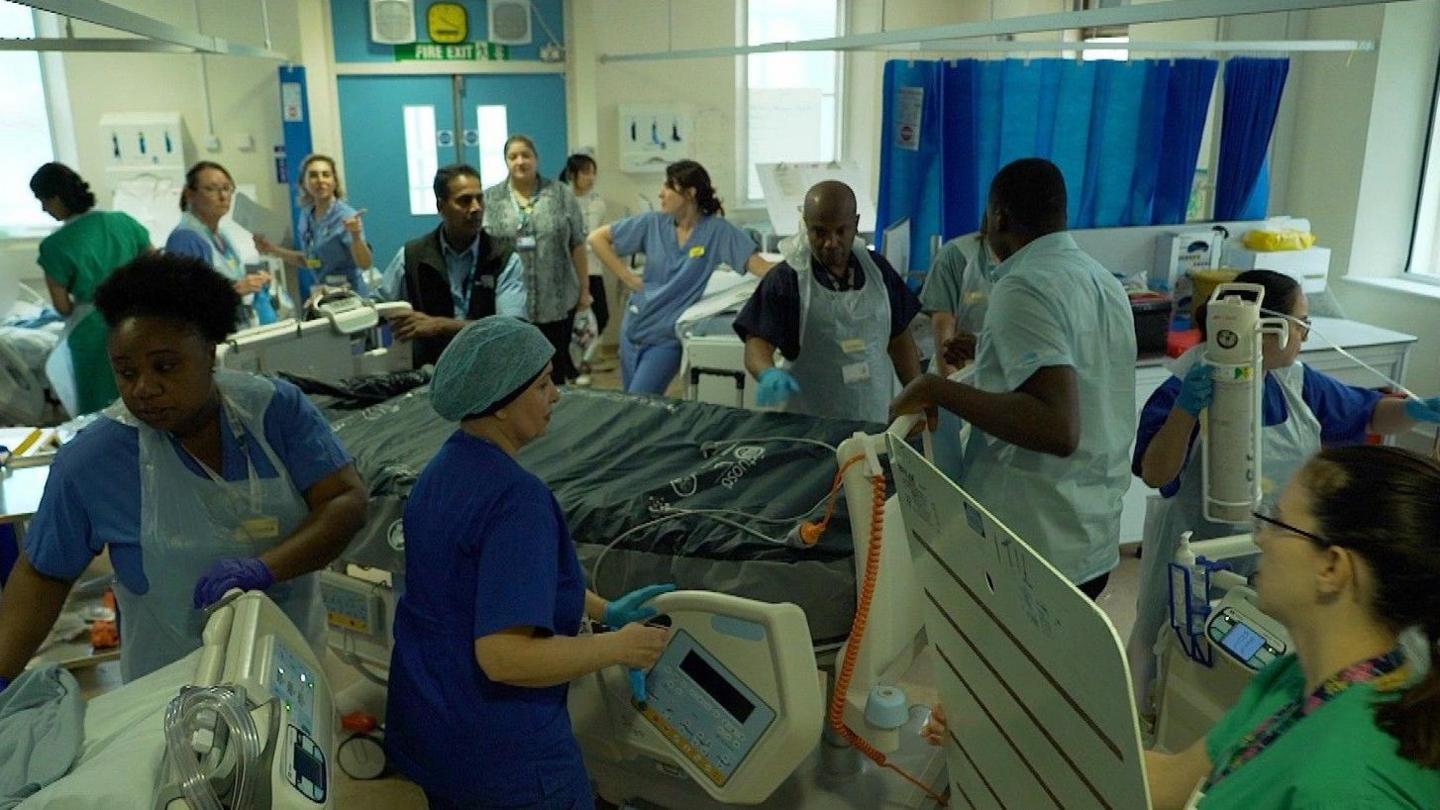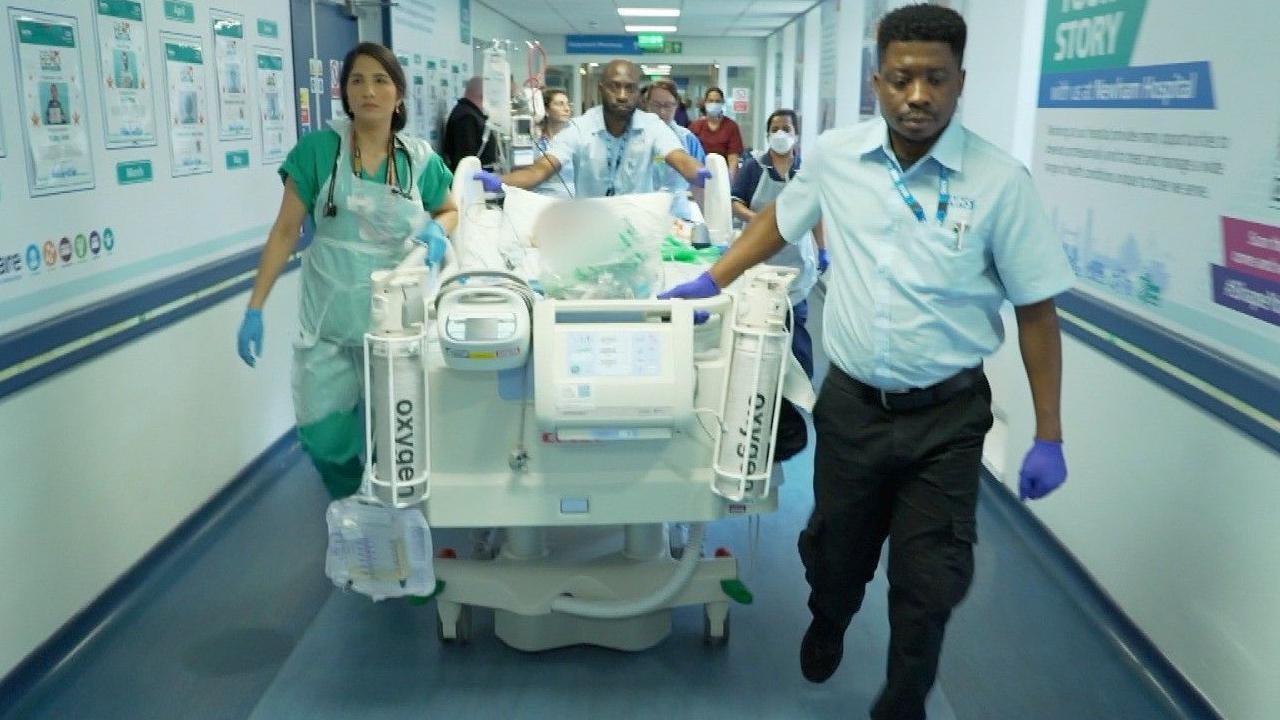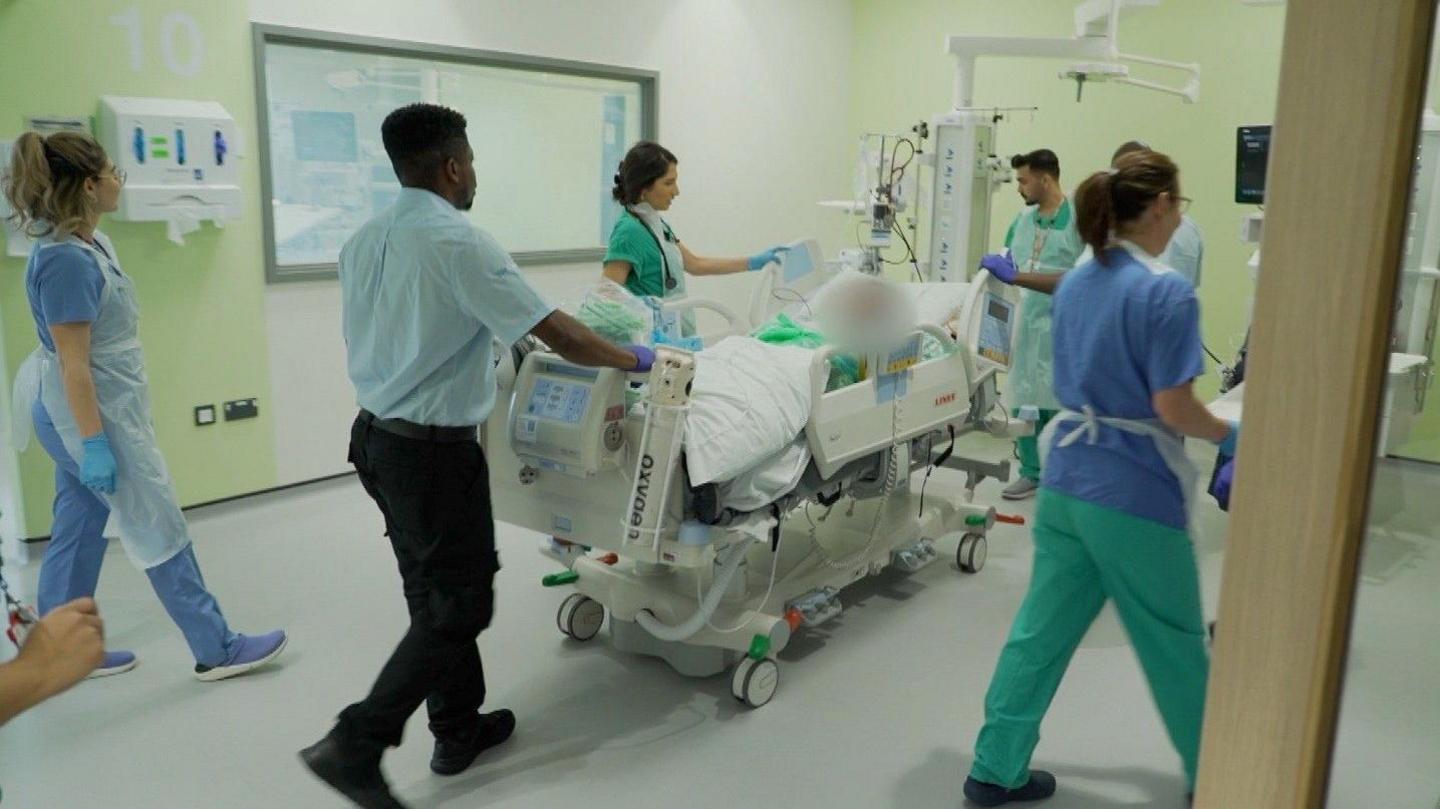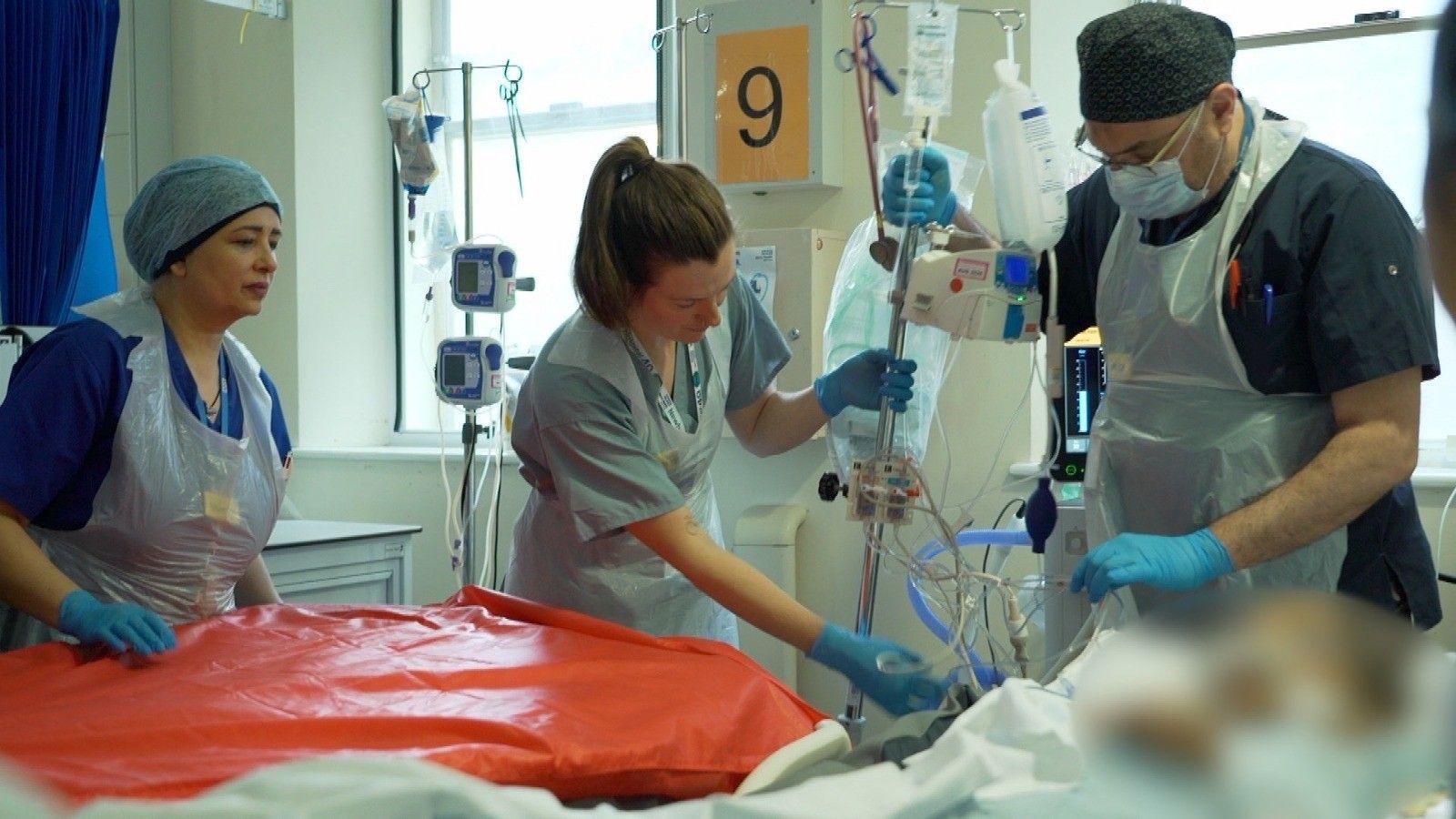How to move an intensive care unit
Watch the team in action moving patients to the new intensive care unit
- Published
The patients on a busy intensive care unit have been moved from one part of an east London hospital to another. BBC London went to witness the challenging mission.
It's 10 o'clock in the morning.
It seems like half of Newham Hospital is crammed into the tight spaces of the intensive care unit.
A seriously ill patient has been brought in overnight, one has deteriorated and needs to be put on a ventilator, while another is being put on life support.
It is very busy, but calm. Conversations are urgent but not loud.
Today, they are planning to move the 14 critically ill patients from this ageing unit to a new one on the other side of the hospital.

The team gets ready to move the first patient
Practice makes perfect
The staff are well-drilled, from the doctors and nurses to the physios and porters. Each knows their role.
Two teams are sent to prepare the first patients for their move, with well-rehearsed checklists to make sure everything is safe.
All of it was practised in a full simulation the week before. On that occasion, the lift broke down so today they're using a different one.
They tackle the least sick patients first. Their vital signs are checked, as are their drugs. Everything has to be loaded from the machines in the intensive care unit on to the bed, ready for transfer.
All they need now are the new beds.

The first patient is on the way down the busy hospital corridor
'Exciting but nerve-wracking too'
There's a bit of a hold-up, but 20 minutes later the beds turn up.
"It's exciting but kind of nerve-wracking too," says the man in charge of the move, Dr James Napier, who is the clinical director for critical care.
"Plenty of things can go wrong, but we have planned well and practised. It is a challenge, but this is all about making it better for our patients."
Moving critically ill patients, while still keeping the intensive care unit running, seems a bit like trying to fix a car while it's still driving down the motorway.
But all is going well.

Bigger, brighter and better - in the new intensive care unit
A new start for patients and staff
Doctors Holly McQuarrie and Sophia Theodoridou are part of the team moving the second patient, navigating the busy corridors, the small lifts and the tight turns.
They've done it before at the simulation a week earlier, so know where the pinch points are. Doing it for real, though, brings its own challenges.
"The practice helped, but obviously it's not the same because now we've got a real person, not a doll... so it's quite different, but the patient is stable now," says Dr Theodoridou.
"Everyone's really excited about coming to the new unit and being part of the move and everything," says Dr McQuarrie. "It does seem quite chaotic and the lady we've just moved was saying 'there are so many people around me', so it was just a case of reassuring her that we were all there to take care of her. "
The new unit has been five years in the planning and building. Fitting it out, and refurbishing two new wards downstairs, has cost about £30m.

Everything has to move with the patient
'A world apart'
As the day progresses, the patients are moved across one by one.
A woman with tuberculosis is "freed" from her current position - a windowless and cramped room that was converted from a store cupboard during Covid. She is moved to a side room in the new unit, with its large windows and new equipment.
Eventually all 14 patients, including the most sick, are transferred. The planning and training have paid off - and now the team are off for pizza.
The last word comes from a relieved Dr Napier: "It's just a much better environment for our patients, a much safer place to be, and in terms of rehab and recovery this is a world apart from where they were before."